When and how to transplant daffodils?
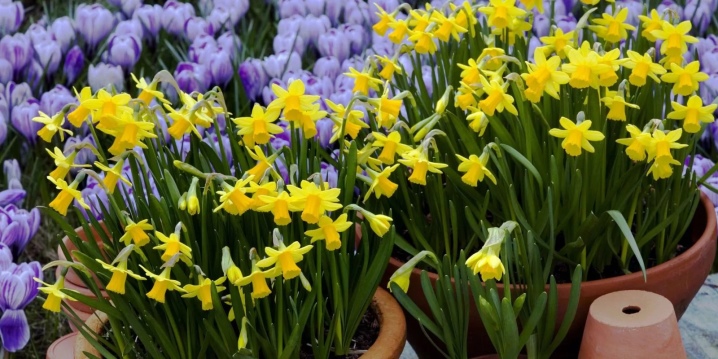
We are used to calling a daffodil a flower, although there is little fairness in this statement.
Narcissus is a bulbous herb that belongs to the amaryllis family.
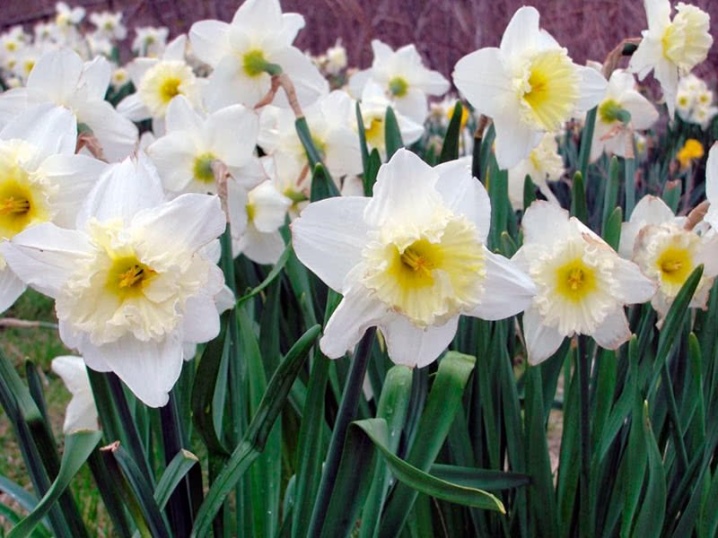
The plant has a peculiar smell, which is popularly known as intoxicating. At the same time, a slightly strange aroma does not interfere with the reputation of the plant (we will call it a flower out of habit) refined, graceful and modest. But this elegance has a price: the daffodil is not so harmless in leaving... If, for example, you notice that there are fewer flowering shoots, the flower should be transplanted.
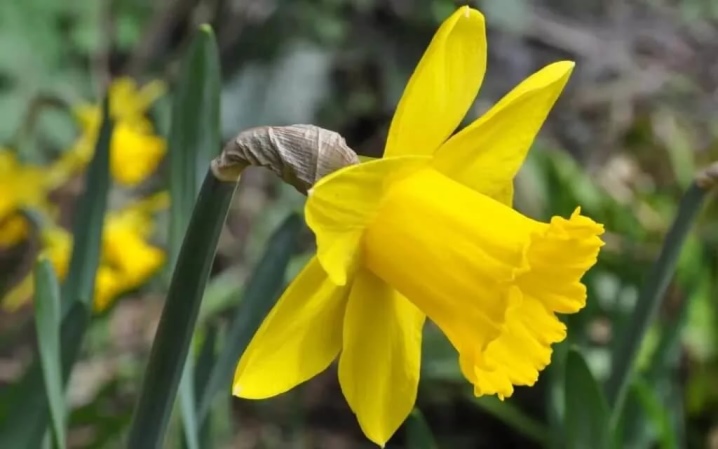
Goals
If we compare daffodils with the same tulips, it can be noted that, unlike their bulbous counterparts, they do not rest. Therefore, it makes no sense to dig up and store them. Except for the moment of transplantation. If the flower family is overcrowded, the bulbs will compete for food and moisture in the soil. The leaves begin to overlap each other, preventing the entire surface from receiving healing ultraviolet light. And such a close proximity simply does not leave the narcissist strength for the next season. He is corny receiving less energy.
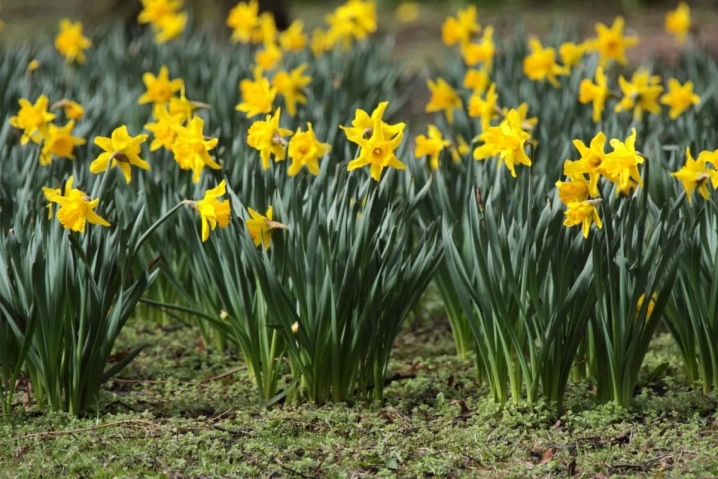
Overlapping leaves are easy to see, but competition in the root system is hidden from the eyes of the grower. But as soon as you notice that the leaves began to decrease in size, this is a direct consequence of the tightness in the roots.
In general, experts believe that 5 years is the maximum period for growing a daffodil in one place.
Still, these are very prolific flowers, they grow quickly, therefore, a transplant every 1-2 years is optimal for these plants. If you are not ready to arrange a transplant so often, then the extreme period of leaving a flower in one place is 5-6 years. If it does not leave its territory further, its flowering will come to naught. The soil under daffodils has become scarce over the years, and basic nutrients are lost.
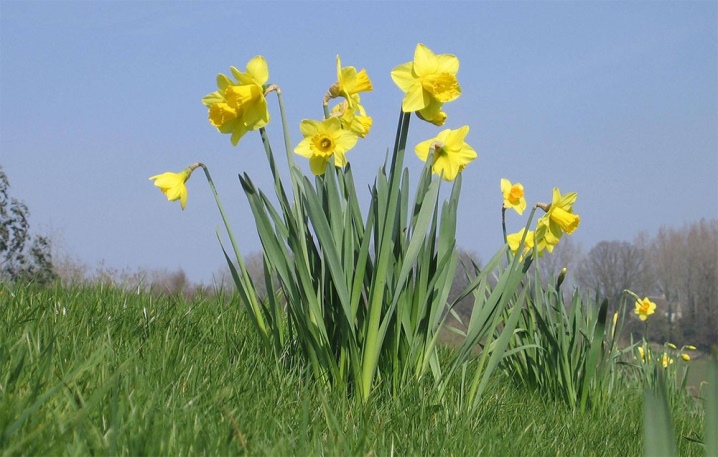
Summing up, the goals of the transplant can be listed as follows:
- planting of plants associated with tightness due to overgrown roots;
- thinning out too dense thickets;
- the fight against overgrowth, which is fraught with the exit of plants outside the flower bed, a violation of the aesthetics of flowering;
- stimulation of the flowering process itself, if it has become scarce and has lost its stability;
- reproduction of bushes;
- prevention of flower diseases.
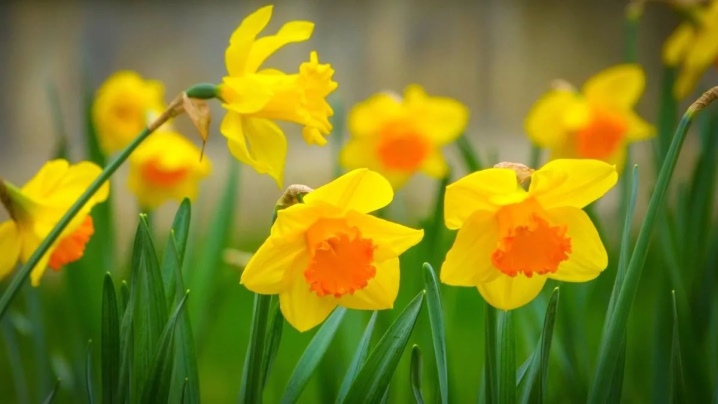
When purchasing a plant of a certain variety, immediately ask how long the daffodil will have to be transplanted.
There are varieties that calmly grow in one place for up to 6 years, but there are also those that, regardless of external readiness, should be transplanted once every 2 years.
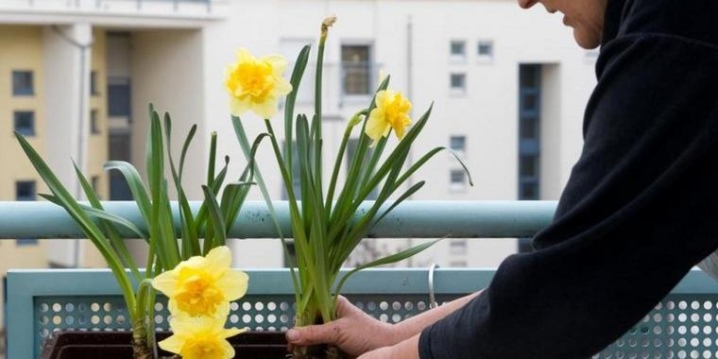
Transplant timing
Usually, they plan to transplant flowers from one place to another in the fall or late summer. This is the best period, the most appropriate time to guarantee the quality of plant movement. The bulbs themselves begin to be dug out at the end of June or at the beginning of July. Be sure to wait until the leaves of the plant turn yellow. But don't wait for them to lie down. By this time, the bulbs have already recovered after flowering.
The material that is extracted from the ground is thoroughly dried, the diseased and damaged parts of the daffodils are removed. The florist must separate the children from the nests, and the bulbs must be sorted by variety and size.
This is an important moment of the transplant, which requires attention and time, but you cannot miss it. Otherwise, you will transplant not the best quality material to a new place - all the work is down the drain.
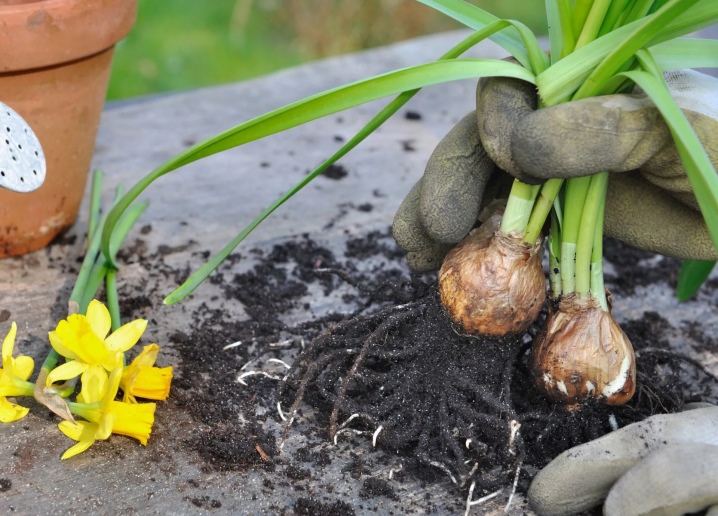
Transplant work is always planned, it is not a messy decision. Finally, preparation simply cannot be chaotic, as storing planting material requires space. And the soil for autumn planting in the garden also needs to be prepared.
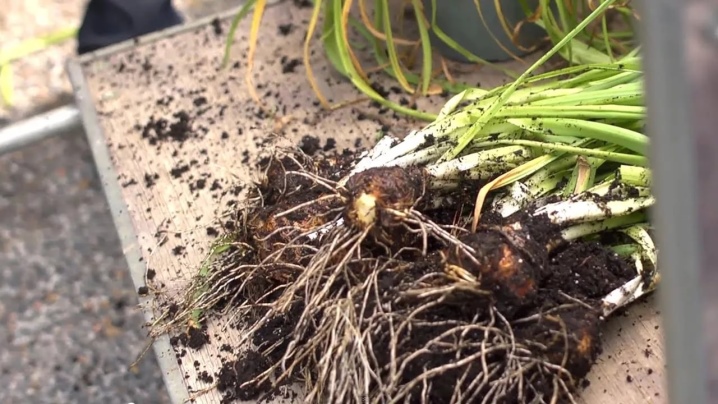
A memo for a beginner grower includes several points.
- Be sure to check your calendar. After flowering, the plant needs 6 weeks of a recovery period, during which time the daffodils accumulate energy. They are not transplanted immediately, of course. In these weeks, a bud is laid, it will bloom next year. Even the most thickened bush needs these 6 weeks of recovery.
- When the daffodils have already been enriched with energy, when they are ready to transplant, this becomes noticeable by the yellowed leaves. But it so happens that the leaves remain green, although their time has come - in this case, follow the calendar, count those very 6 weeks.
- When transplanting, try to separate the roots of the plant as carefully as possible. In thickened roots, there are difficult-to-separate weaves, which are almost impossible to separate from each other without trauma.
Finally, do not procrastinate with the transplant. With the onset of cold weather, the chances of a successful operation drop sharply.
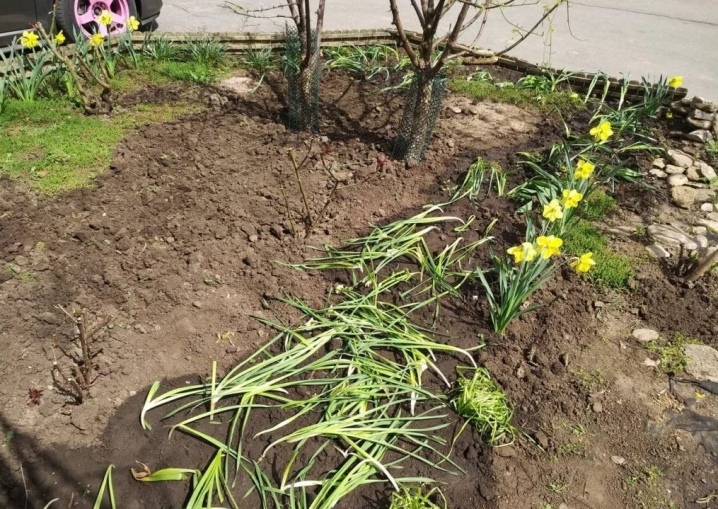
Plants should definitely not be repotted in the spring during flowering.
If you disturb the daffodil during this active phase, the bulb is at risk of death. In August, the laying of roots takes place - you can plan a transplant at this time, but not earlier. If you start a transplant in July, then at the time of cold weather the daffodils will be in an unsuitable developmental phase for this period. Even if winters are mild and warm, do not transplant during this period.
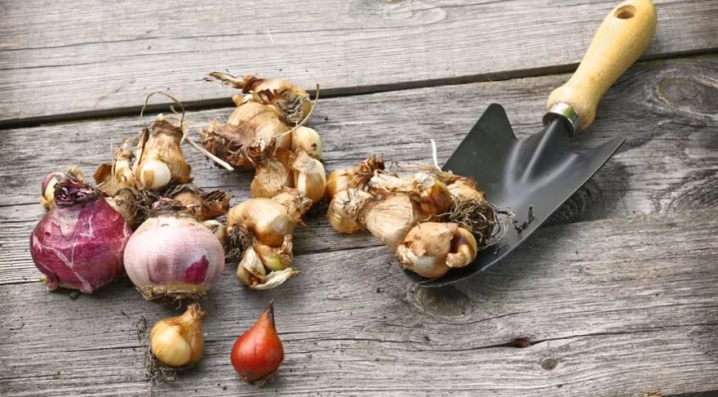
Step-by-step instruction
There are no particular difficulties in the transplant process itself. Even if you have been doing flowers in a flower bed for the first year, you will probably cope with the standard procedure. The whole process can be broken down into 9 steps.
- Finally, decide at what specific time period you intend to plant daffodils. The optimal period, as already noted, is August - early September.
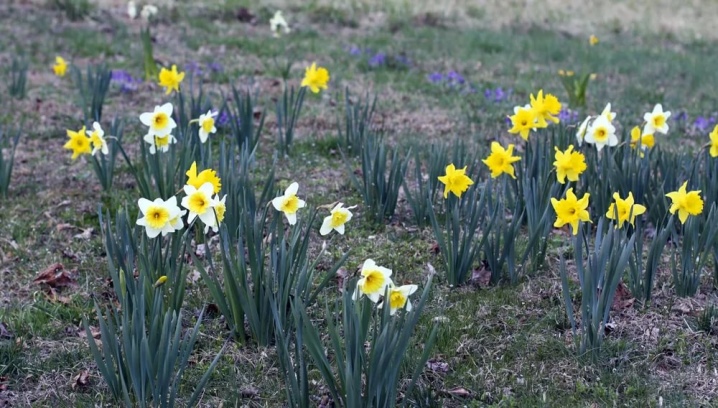
- Try to dig up the bulbs as delicately as possible. Losing the root process for a daffodil is not scary, it does not become less fertile from this, but it is better not to deform the tubers at all. This is fraught with the development of diseases, as well as the formation of a decay process. All this can lead to the death of the plant. To secure the digging process, dig in the onion around the perimeter, and then remove it directly with the earthen lump. This shovel is not very convenient to do, but the garden pitchfork is quite appropriate.
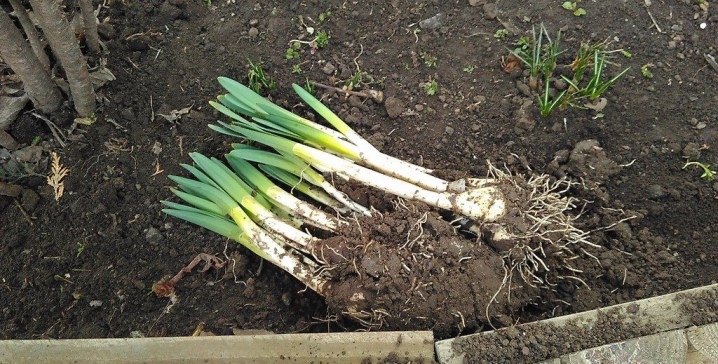
- Manually clean the dug out bulbs from the adhering soil, examine them. It is better to do this outdoors in order to see a true picture of the condition of the bulbs in natural light. If you see traces of disease on them, if any deformations are striking, if the bulb is injured by rodents or insects, destroy the specimens.
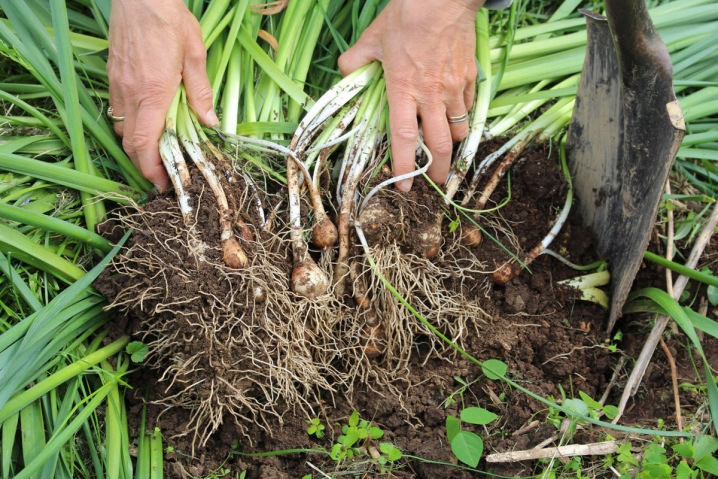
- The bulbs that have passed the selection must be delicately washed with clean and warm water, and then soaked them for another half hour in a weak manganese solution.
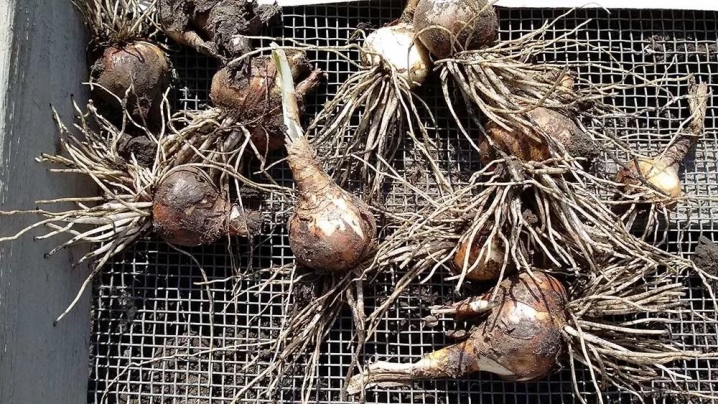
- Once the planting material is processed, put the bulbs in clean containers, place these containers in a dark place with good ventilation. The ideal storage temperature is +17 degrees Celsius.
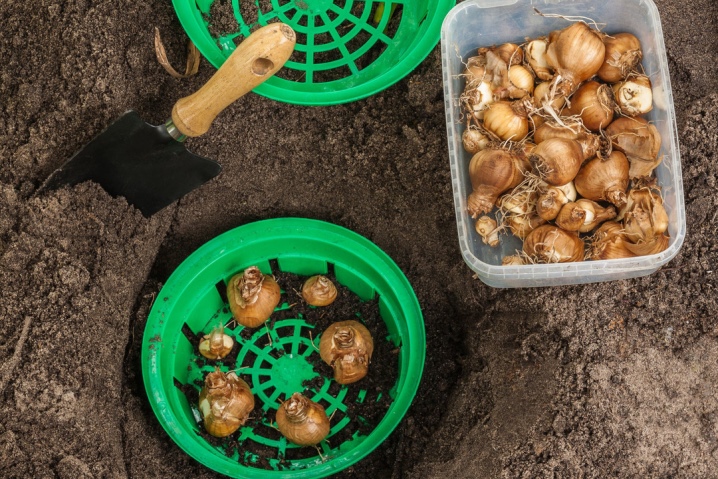
- When the tubers are dry, hurry to plant them in a new place. Experts say that for daffodils to bloom better, they should be planted in asymmetric groups. But if you grow them for cutting, then still try to plant the plants in even rows.
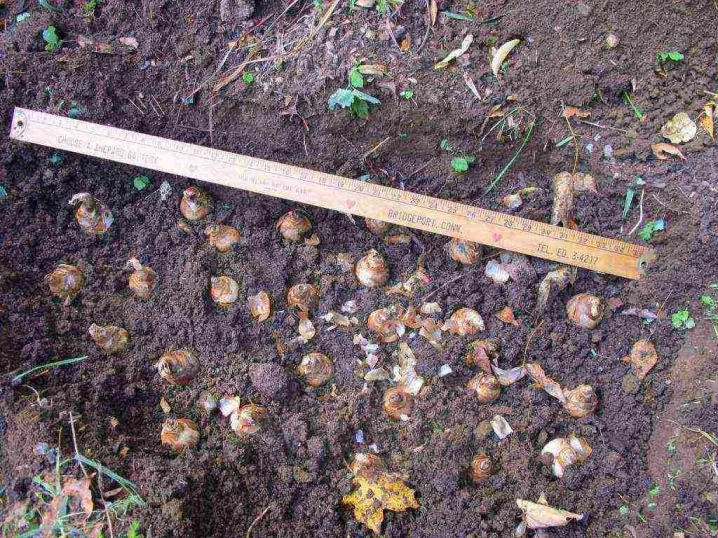
- The average depth is 12 cm. But if the soil is light, increase the planting depth to 16-17 cm. If you plant children, the depth will be 10 cm.

- Make the holes where the bulbs will be planted in advance. A prerequisite will be the distance between the holes in 12 cm (minimum - 10).This meets the conditions for an acceptable dense planting, which will allow the root system to develop normally, without oppression. But if your goal is to get more babies, the interwell spacing increases to 15-20 cm.

- The bulbs planted in the holes must be covered with garden soil from above. If the transplant occurs in established dry weather, the first watering should be carried out in the new place.

A natural question arises - where exactly is it better to transplant daffodils?
Since these flowers are extremely demanding on lighting, try to transplant them in open areas.
Nearby, it is desirable that there are no large buildings, tall shrubs and trees. In a word, objects that prevent the normal access of sunlight to the flower should be absent in the zone of its transplantation. It is good if you align and drain the planting site beforehand. Daffodils like to grow in moist soil, but clay-textured soil can be dangerous to the plant. Excess moisture accumulates in it, which is why the flower can rot.

Follow-up care
Be sure to carefully observe how transplanted daffodils behave in the open field. Recall, these are perennial plants, because the quality of the transplant and its safety affect how the plant will develop in future years.

Let's list the main points of care.
- In the spring, save the plant from winter shelter in time. If you take your time, high temperatures can steam up the flower so much that it turns out to be weak and unviable.
- Add fertilizing mixtures to the soil, but do not let manure get into it. In early spring, the plant is fed with ammonium nitrate, and then daffodils can be fed with plenty of potassium and phosphorus. From time to time it is required to add mineral fertilizers strictly according to the instructions.
- Water the plant regularly to keep the soil dry. Each square should take about 2-3 buckets, this volume is enough to saturate the root shoots. Remember to loosen the soil after every watering or rain.
- Gradually stop watering at the end of the first summer month or early July. At this time, the flowers are already beginning to fade, they give all the nutrients to the tubers.
- Do not forget about regular weed removal, not only pluck the grass superficially, remove weed roots as well.
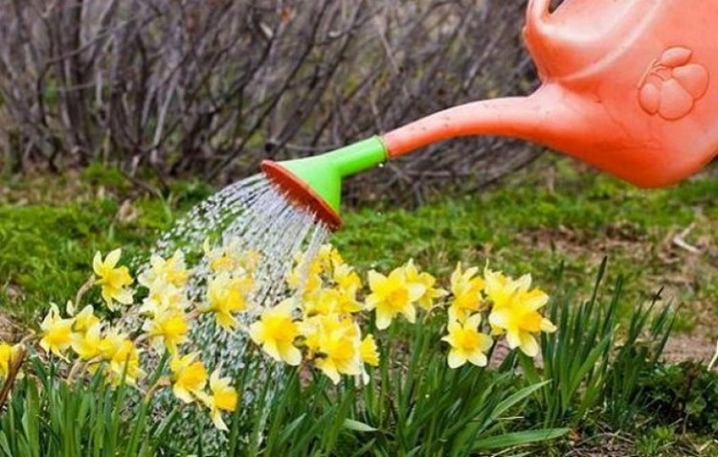
Many varieties of daffodils require wintering.
If you have flowers on your site brought from other regions with a milder climate, if you grow terry and tactile varieties, if these are daffodils with low frost resistance, they must definitely organize a shelter for the winter. The transplanted flowers are usually covered with dry grass or foliage, the average layer level is 6-7 cm. A plastic film is stretched on top, fixing the insulating layers.
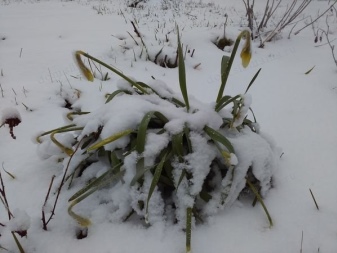
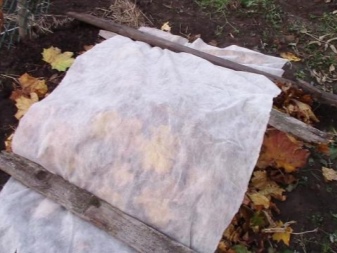
Major mistakes
Of course, not all growers manage to avoid mistakes associated with the cultivation of daffodils and, in particular, their transplant. Let's analyze typical mistakes.
- For fertilization, the florist uses manure masses. But daffodils do not tolerate manure in the ground at all, as well as other bulbous ones do not tolerate it. If there is direct contact between the bulb and manure, the plant is threatened with death.
- Very early warming after transplantation. This is also fraught with the death of the plant or serious damage to it, if the period of warming falls on a long thaw.
- The very fact of refusal from periodic transplants. If you hesitate with a transplant, daffodils will quickly become scarce, lose their fresh and lush appearance, and the size of their tubers will decrease.
- Conversely, frequent transplanting is also harmful to bulbous. Young daffodils gardening experts advise not to disturb the first 3 years after they are planted in a new place until they have their first babies.

If the transplant failed either in summer or in autumn (for various reasons), choosing spring for this purpose is an extreme measure.If you do this, then immediately after the snow melts. You cannot delay with this process, since the formation of roots will take about a month. And yet, even with the most competent transplant in the spring, with timely fertilization, there is a high probability that the daffodils will not bloom next season.

In accordance with the above, one can only briefly summarize the information. After the daffodils have turned yellow, as they begin to dry, do not hold the flowers in this form. If you delay transplanting, the quality of the bulbs will seriously deteriorate.
Even if there is some slight damage, if the plant is already affected by flower diseases, it is not worth saving it. Get rid of the waste, destroy it and keep the material healthy.
Novice growers often mistakenly decide to get rid of lawn grass, believing that it will damage the growth and flowering of daffodils. You should not mow the grass, even with the remains of the plant, since after that it will be difficult for daffodils to receive and store solar energy, to accumulate nutrients.
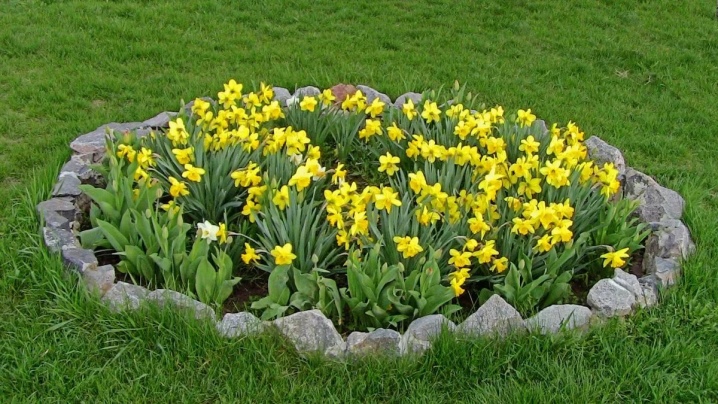
In the next video, you will learn about the rules for planting daffodils in the fall.






































































































The comment was sent successfully.